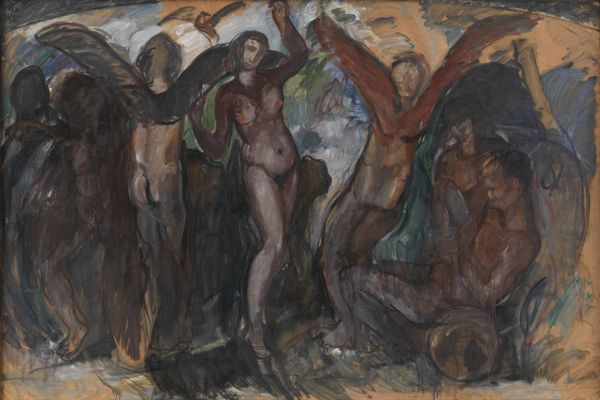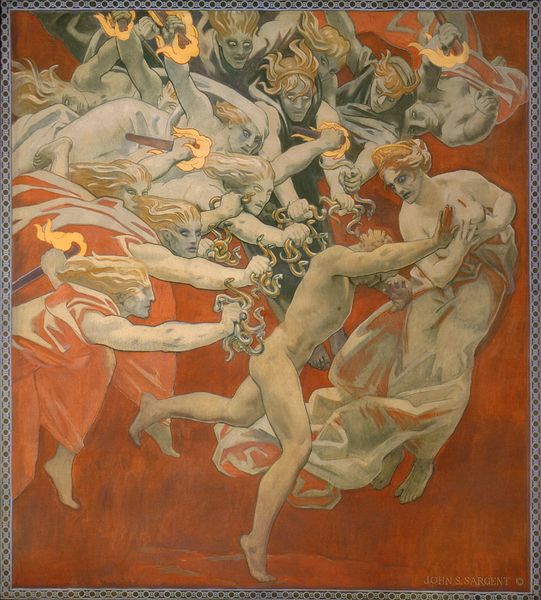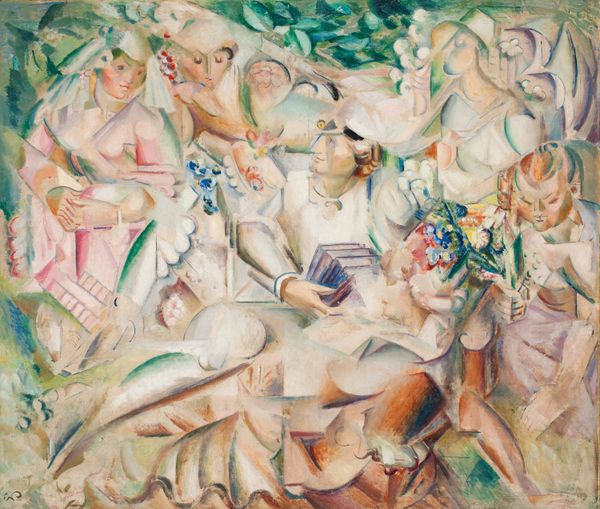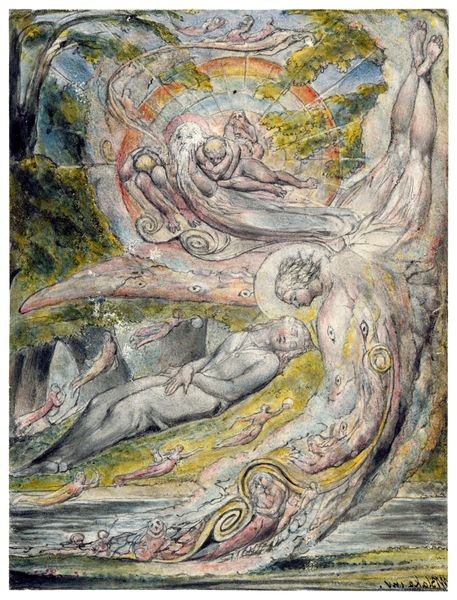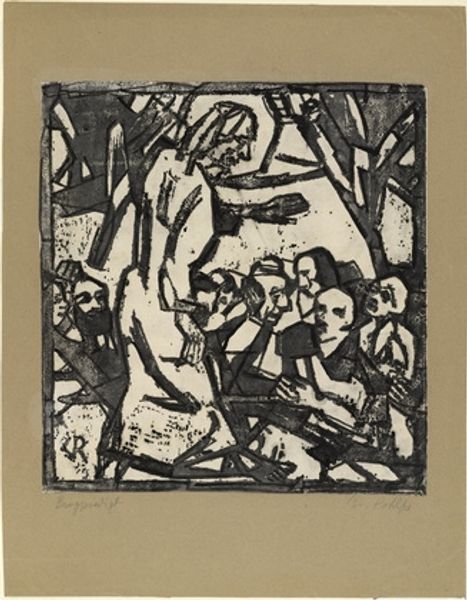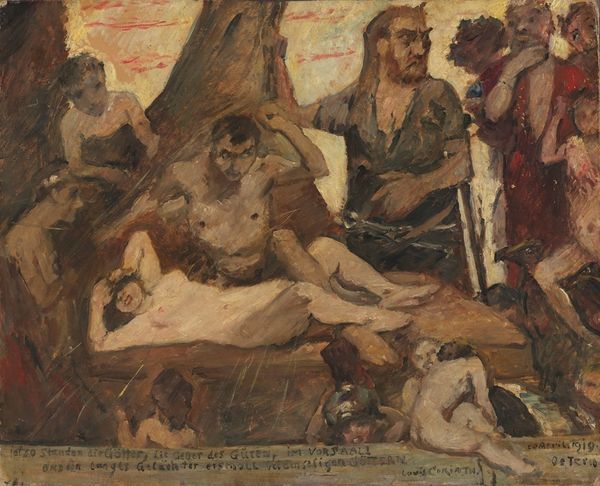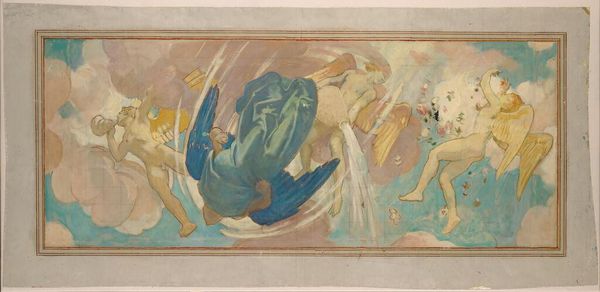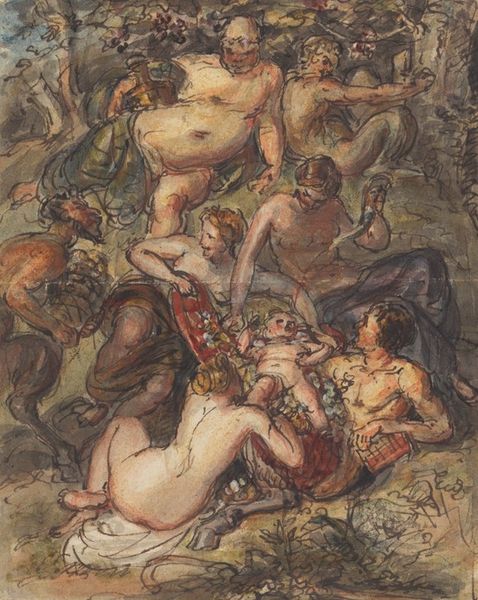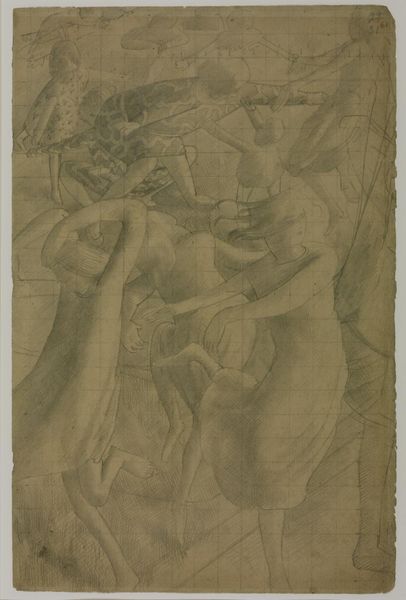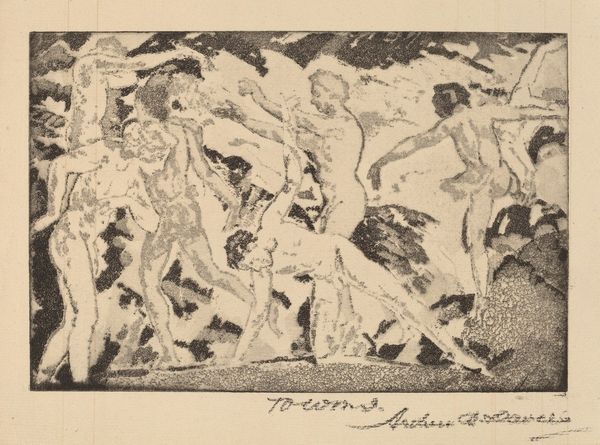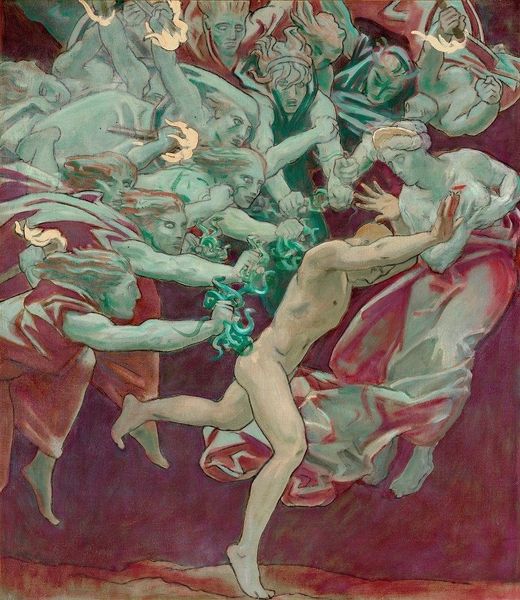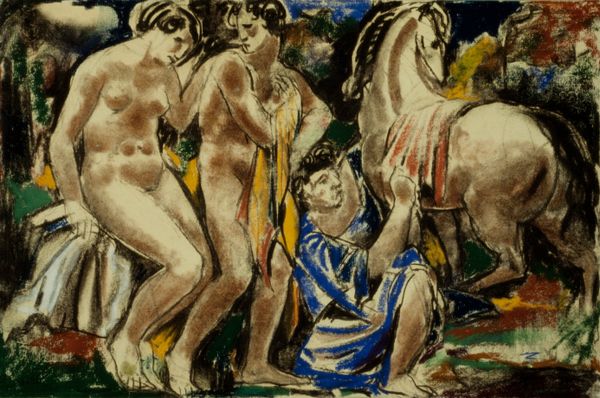
drawing, lithograph, print, paper
#
drawing
#
narrative-art
#
lithograph
# print
#
figuration
#
paper
#
symbolism
#
history-painting
#
watercolor
Dimensions: 581 × 747 mm
Copyright: Public Domain
Curator: Henri de Groux's lithograph, “Christ Among His Tormentors," dating from 1894-1898, presents a dense, swirling composition. My first impression is its sheer visual chaos. It feels overwhelming, almost claustrophobic. Editor: Overwhelming is certainly a fitting description. De Groux uses the narrative of Christ's Passion as a lens through which to examine human cruelty. Notice how the composition pulls you in with its frantic energy—all those faces, compressed and contorted! The symbols—the chalice, Christ's halo, even the prostrate serpent—anchor the meaning in familiar iconography, though interpreted through a modern, angst-ridden sensibility. Curator: From a purely formal standpoint, look at the layering of the figures. The density, achieved with lithographic techniques and the application of color, is not just about depicting a crowd. The crowding creates an overall texture, one that speaks to the violence of the scene, doesn't it? There's no serene central point; the composition eschews classical harmony. Editor: Precisely! Harmony is deliberately absent here. Consider how de Groux portrays Christ, surrounded by jeering figures. His is not a traditional pose of stoic suffering. Instead, he's almost lost, one figure amongst many. He's still haloed in divinity, but the tormentors clearly dominate the immediate symbolic space, signifying the very human and societal rejection of the sacred. Even the peripheral, sketch-like drawings evoke additional symbolic resonance. Curator: Agreed. The dynamism generated between these zones--the highly worked central action versus the ghost-like traces framing it--creates compelling visual tension. It moves between solid form and a kind of dissolving, unstable space. Editor: In art historical terms, "Christ Among His Tormentors" resonates with late 19th-century Symbolism and its preoccupation with inner experience. De Groux uses historical narrative as a vehicle to probe psychological and cultural themes related to betrayal, moral corruption and humanity's latent capacity for cruelty. Note how he draws upon recognizable religious symbolism to express such concepts through emotionally charged imagery. Curator: Examining the arrangement and application of color gives us an appreciation of the emotional distress that characterizes symbolism and post-romantic aesthetic values in that specific moment of European history. The composition gives us ways to investigate these symbolic expressions, too. Editor: An artwork demanding consideration of symbols and also offering the possibility of more formal interrogation of structure.
Comments
No comments
Be the first to comment and join the conversation on the ultimate creative platform.
